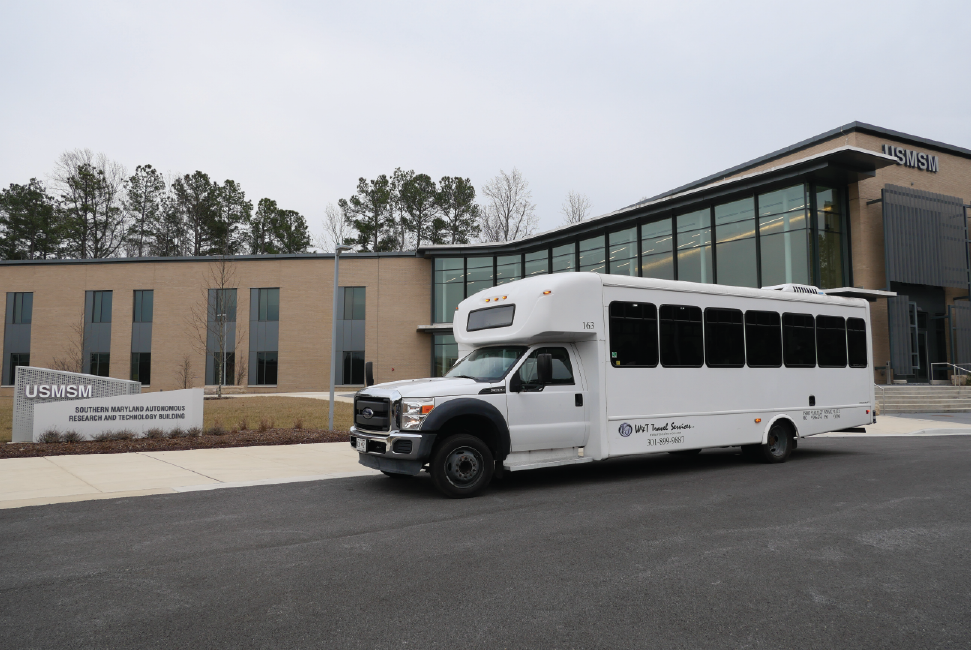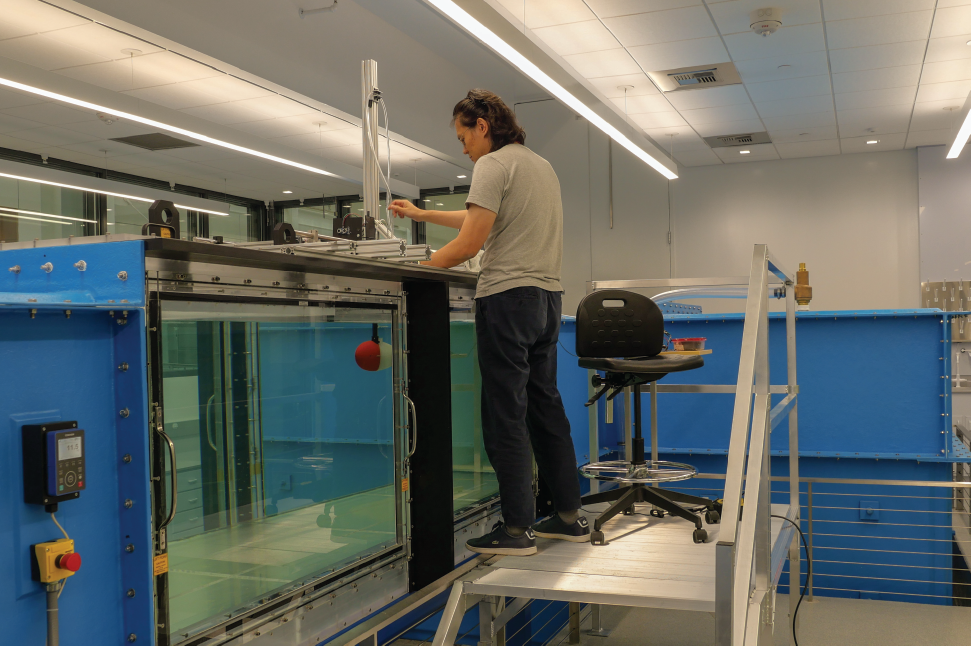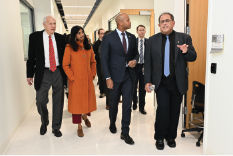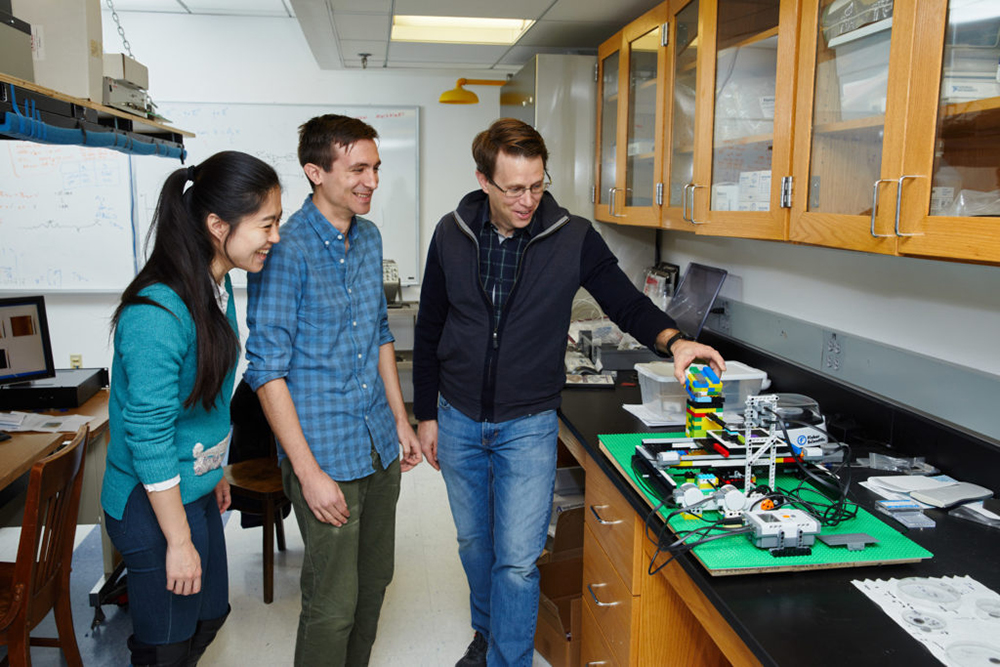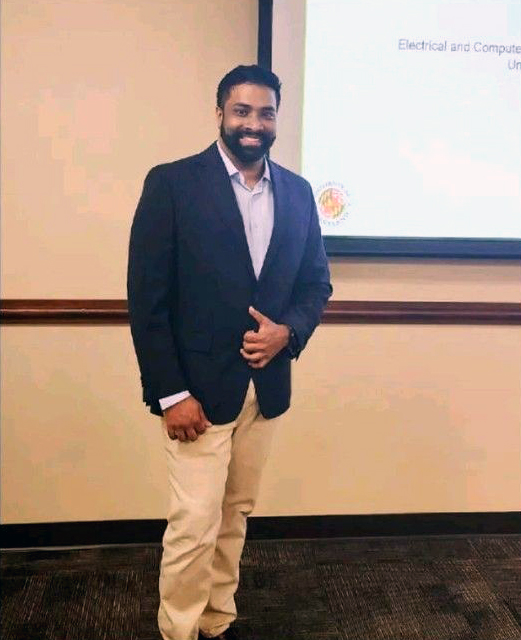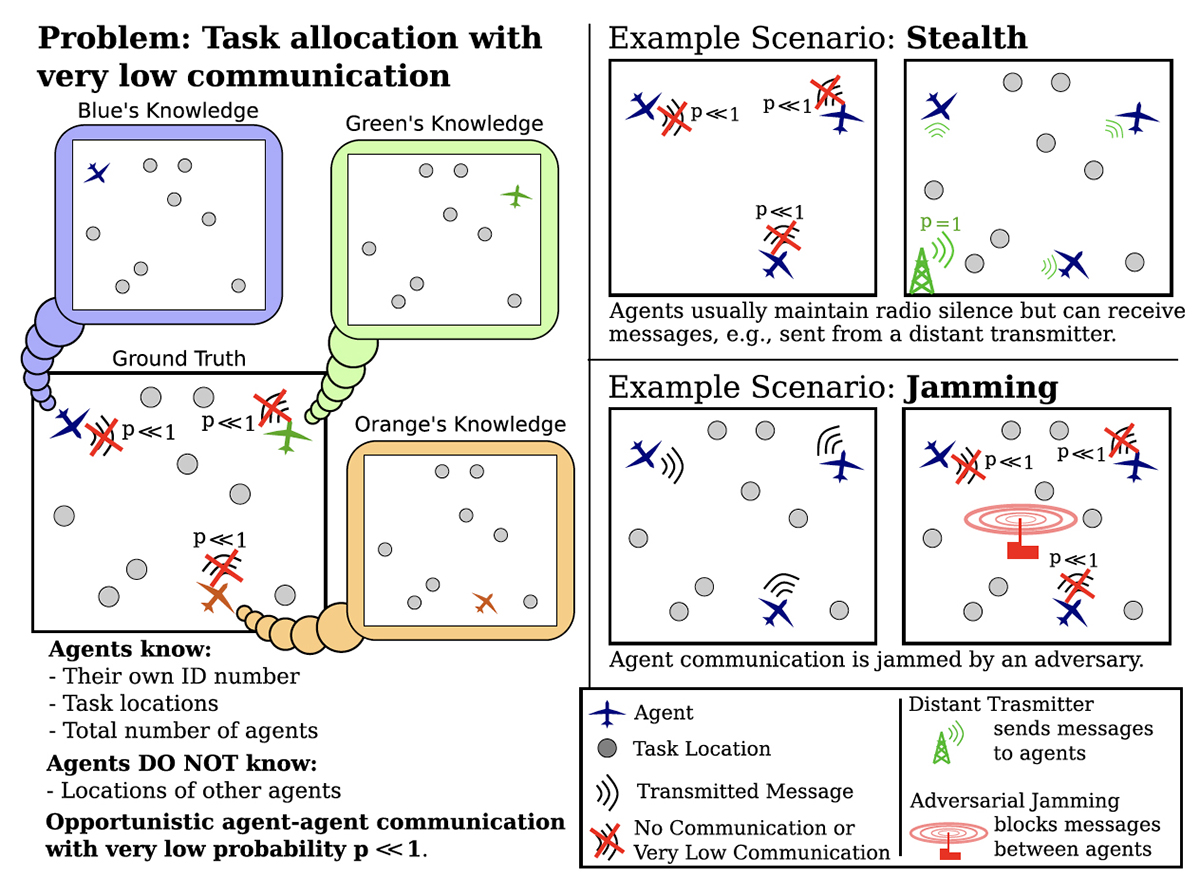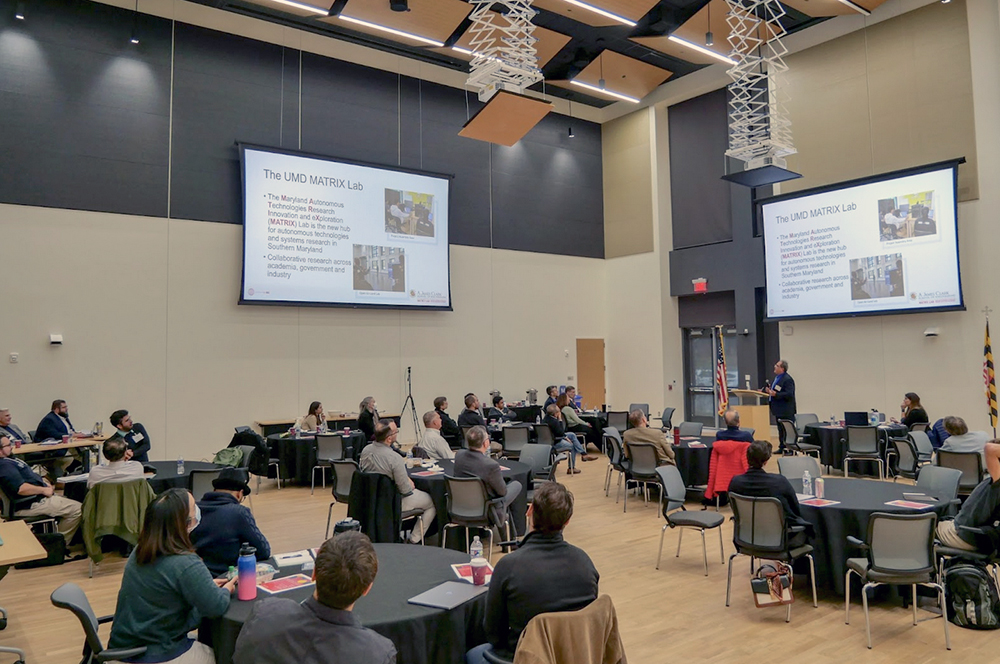News Story
Building bridges for technology research and education across Maryland
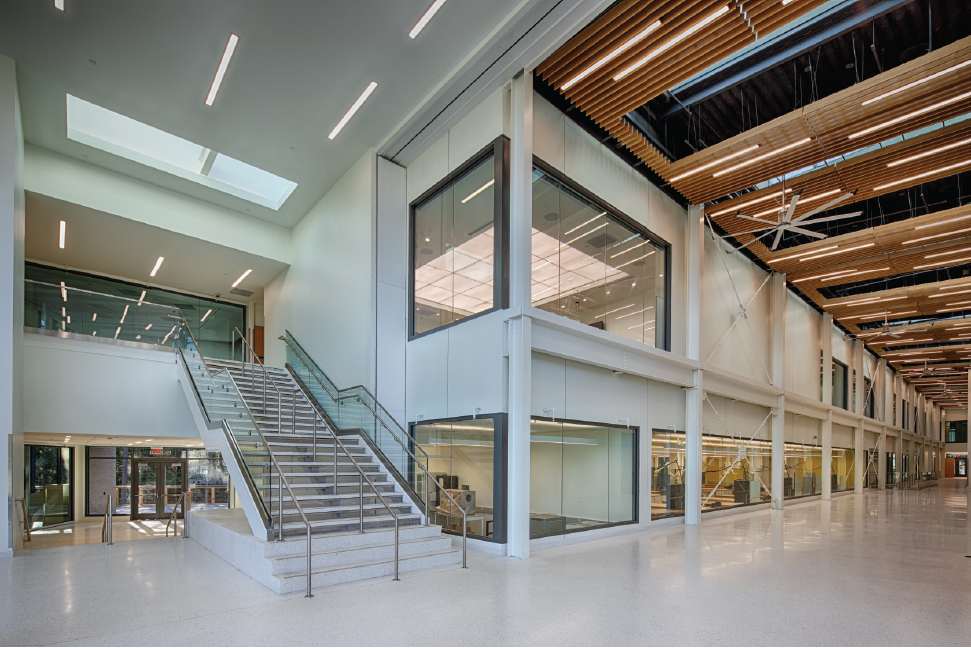
A new Southern Maryland hub for autonomous technologies and systems research is sparking innovation and building bridges for partnerships in research, education, and economic development. The SMART Building in St. Mary’s County, Md., is a joint effort of the University of Maryland (UMD) and the University System of Maryland at Southern Maryland (USMSM). This single space for innovation is one of the most recent additions to the state’s “autonomy corridor” and is the home of the UMD MATRIX Lab.
About the MATRIX Lab
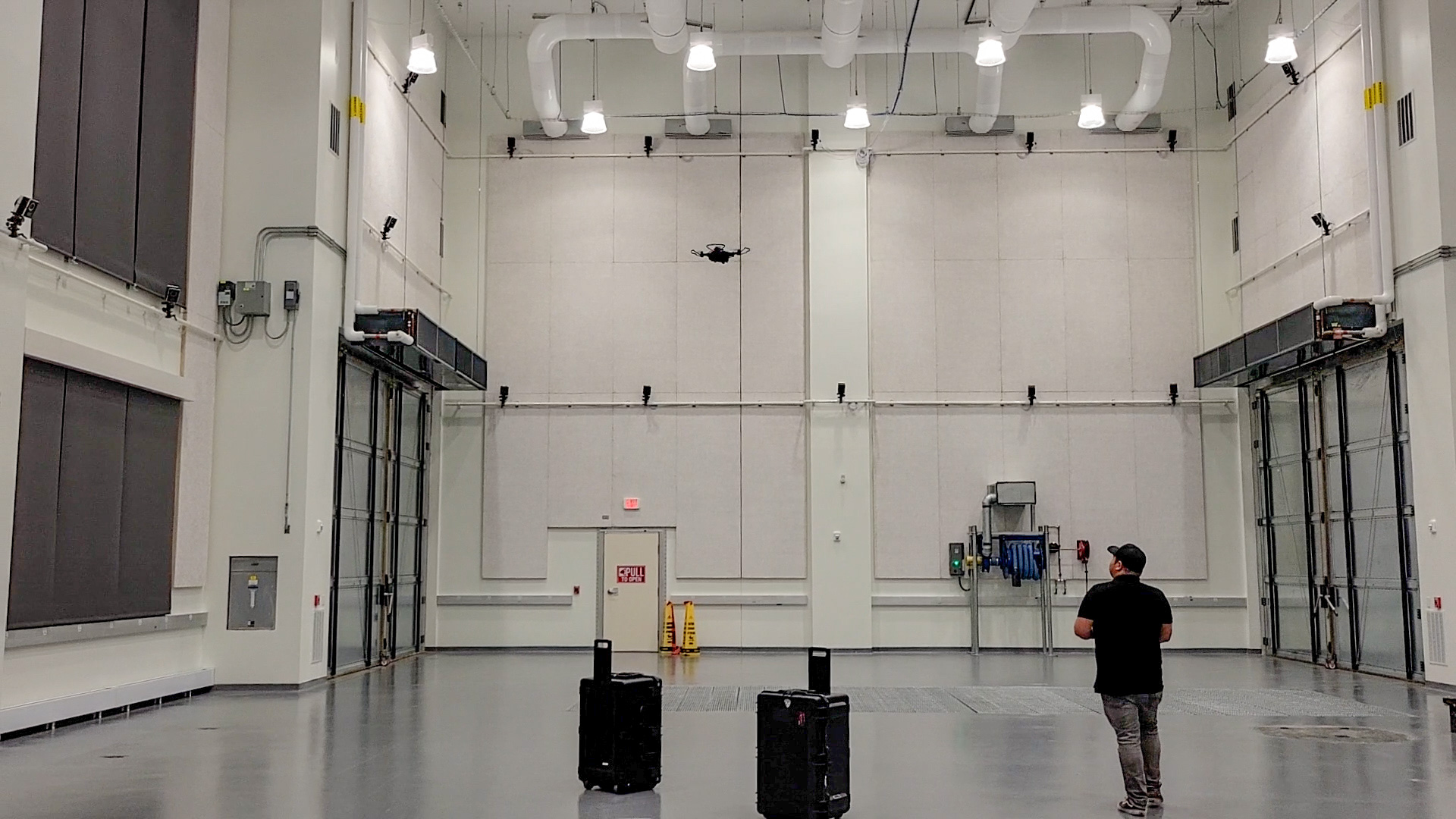 The MATRIX Lab is a high-tech research and education facility with unique features built to advance autonomy and uncrewed systems. The lab serves industry, government, academia, and most importantly, the people of Southern Maryland. It maintains multiple affiliations and partnerships with the Department of Defense, including the Naval Air Warfare Center Aircraft Division (NAWCAD).
The MATRIX Lab is a high-tech research and education facility with unique features built to advance autonomy and uncrewed systems. The lab serves industry, government, academia, and most importantly, the people of Southern Maryland. It maintains multiple affiliations and partnerships with the Department of Defense, including the Naval Air Warfare Center Aircraft Division (NAWCAD).
The MATRIX Lab’s research facilities are unique in southern Maryland.
- The 80’x60’ Open Air-Land Lab is the largest, most advanced lab of its kind in the state. It is RF-attenuated and has a Vicon Vantage V16 camera system. This lab can be used to test and tune both air and ground autonomous systems in an electromagnetic shielded space.
- The Fluid Dynamics Tank (water tunnel) is the largest in Maryland outside NSWC Carderock. It has both laser and optical measuring systems and can be used for both aerodynamic and hydrodynamic research.
- The Anechoic Chamber is a high-level electromagnetic “clean room” that can be used to test RF-transmitting and receiving components and systems, as well as audio systems.
- The Outdoor UGV Playground is a 750’ testing area for robotic ground vehicles. Its terrains and obstacles provide varying levels of difficulty.
- The Project Assembly Area provides workspace and tools for students and others to collaborate, create and revise. 3D printing and machine shop facilities, and electrical and mechanical engineering labs are here too.
- A small, 1’ square wind tunnel is ideal for education projects and can also be used for research. Top speed = 110 mph.
The autonomy corridor
The State of Maryland has been investing in regional economic development technology corridors for years, based around key established regional partners and the assets of the University System of Maryland. The “autonomy corridor” extends through central and southern Maryland and includes both UMD and USMSM facilities. This region is home to numerous government agencies, academic institutions, and industry partners focused on autonomy and uncrewed systems.
The autonomy corridor begins in Aberdeen in northeastern Maryland and extends through the medical communities of Baltimore. In central Maryland it includes the institutions of the University of Maryland Baltimore County, the Johns Hopkins Applied Physics Laboratory, the Naval Surface Warfare Center (NSWC) Carderock, the NASA Goddard Space Flight Center and the University of Maryland, College Park. In southern Maryland, partners include the Naval Air Warfare Center Aircraft Division (NAWCAD), NSWC Indian Head, NSWC Dahlgren, NASA Wallops Flight Facility, Naval Air Station Patuxent River and the St. Mary’s County Aeropark Innovation District. A number of Army, Navy and NASA federal laboratories dispersed throughout the corridor round out the research community.
The SMART Building and MATRIX Lab are important new additions serving the clients and communities in the southern end of this corridor.
Supporting the potential of southern Maryland
The SMART Building brings the capabilities and resources of the University System of Maryland and the University of Maryland, College Park to southern Maryland. It is the only USM regional education center to house a research component. The building supports basic, applied and operational autonomous technology research, and is becoming a regional hub for identities and partnerships, particularly with the Navy. Its flexible space can be used for both undergraduate and graduate education in technological areas, addressing regional industry needs. In addition, this new asset is helping to advance equity and foster skills that lead to high-demand careers with family-sustaining wages. The building will support work-based learning, research, internships, and real-world experiences that complement classroom education.
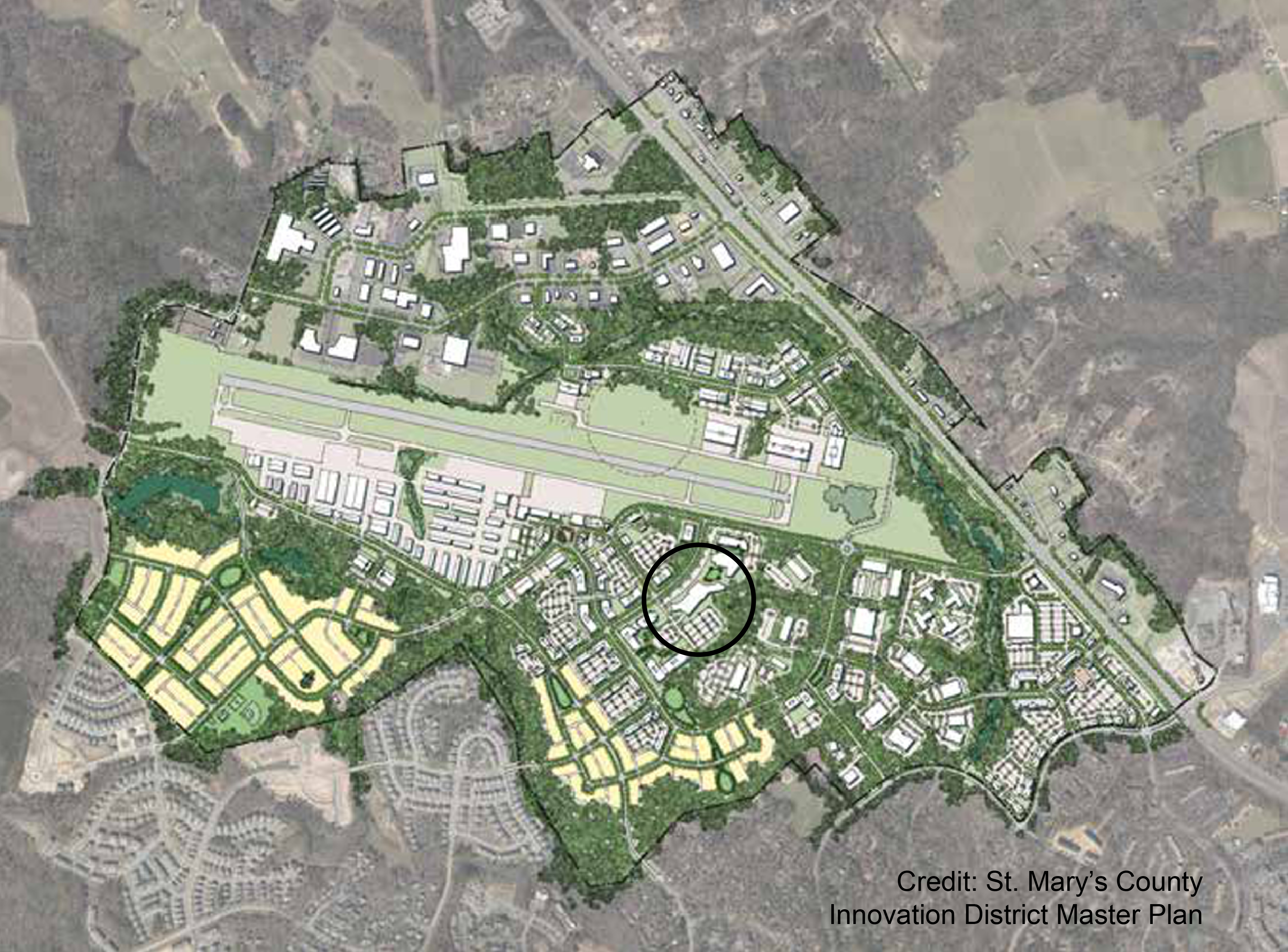 The USMSM campus and the SMART Building are the geographic and conceptual hub of the AeroPark Innovation District, an economic development area centered around the St. Mary's County Regional Airport. It includes southern Maryland's new business incubator as well as aviation, aerospace, and engineering companies. The district’s master plan includes future research, education, industry, retail, and residential areas.
The USMSM campus and the SMART Building are the geographic and conceptual hub of the AeroPark Innovation District, an economic development area centered around the St. Mary's County Regional Airport. It includes southern Maryland's new business incubator as well as aviation, aerospace, and engineering companies. The district’s master plan includes future research, education, industry, retail, and residential areas.
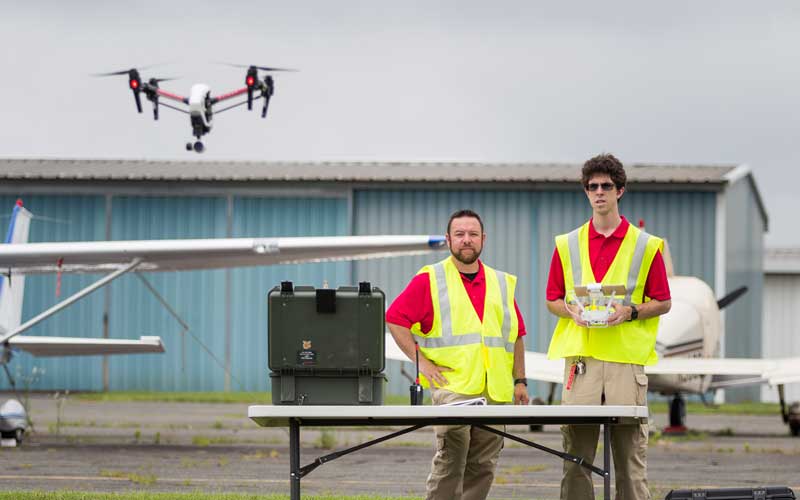 The nearby UMD UAS Research and Operations Center (UROC) is one of only a handful of institutions that work directly with the Federal Aviation Administration to advance UAS research and demonstrate operational capabilities. UROC operational experts help their clients understand and adhere to FAA airworthiness rules and standard aviation safety and operations procedures. Its unique facilities help determine the possibilities of customized vehicles. The site provides testing, evaluation, flight operations, and flight services, flying uncrewed, autonomous systems over land and water at the St. Mary’s County Airport and surrounding areas.
The nearby UMD UAS Research and Operations Center (UROC) is one of only a handful of institutions that work directly with the Federal Aviation Administration to advance UAS research and demonstrate operational capabilities. UROC operational experts help their clients understand and adhere to FAA airworthiness rules and standard aviation safety and operations procedures. Its unique facilities help determine the possibilities of customized vehicles. The site provides testing, evaluation, flight operations, and flight services, flying uncrewed, autonomous systems over land and water at the St. Mary’s County Airport and surrounding areas.
Expanding services
Planning workshops, research reviews and support services are being added in the coming months to facilitate interactions between the University of Maryland, College Park and the SMART Building and MATRIX Lab. In January 2023, the university will launch a shuttle service to run every other week between the two locations. With a capacity of 30 and WiFi connectivity, the shuttle will make the 1.5 hour trip between the Kim Building on the College Park campus and the SMART Building in St. Mary’s County convenient for both faculty and students. Click here for the shuttle schedule, and to sign up to ride it.
Published December 14, 2022
